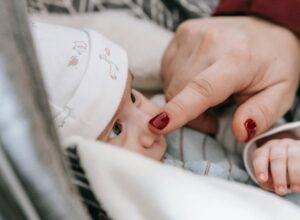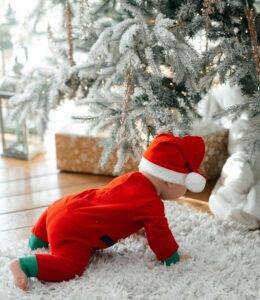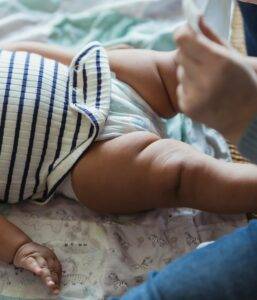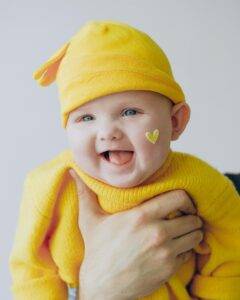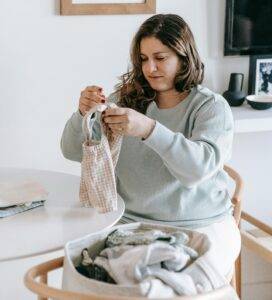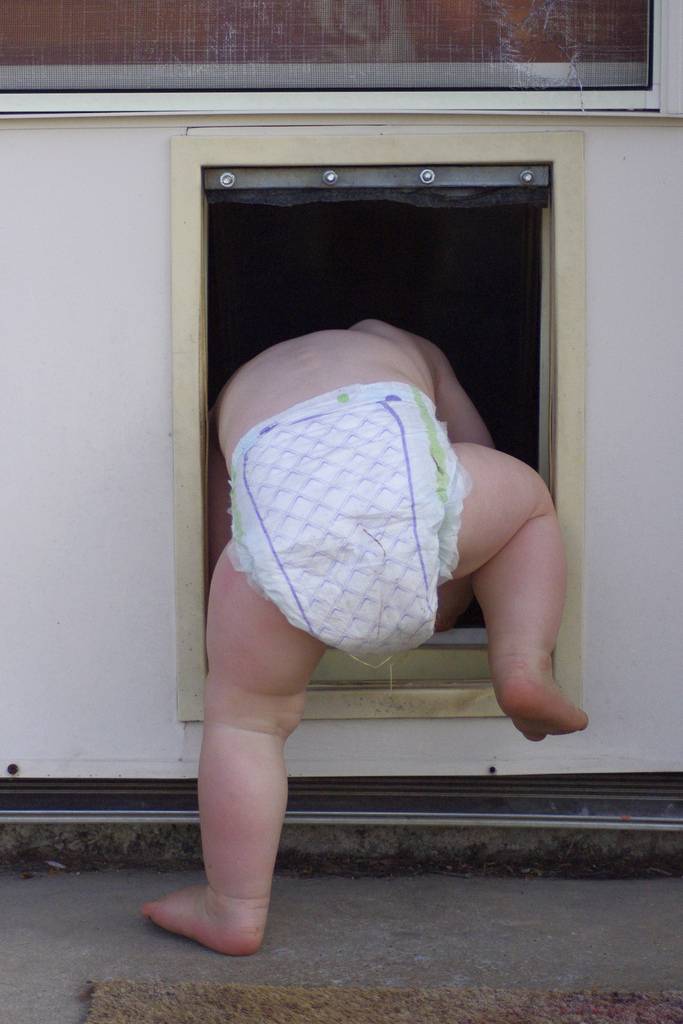Bringing a newborn baby into the world is an exciting, life-changing event. However, with the excitement comes a long list of decisions, including figuring out what your baby will need in those first few weeks. One of the common questions many new parents ask is, “Are newborn baby clothes necessary?“
The short answer is yes, but how much and what types of clothes you need might surprise you. This guide will cover everything new parents need to know about newborn baby clothes. By the end, you’ll understand how to prepare a practical, functional wardrobe for your little one that will keep them comfortable, safe, and happy.
Why Are Newborn Baby Clothes a Must-Have?
Newborn baby clothes serve many purposes beyond making your baby look adorable. We will explore why they’re essential and how they impact your baby’s health.
1. Keep Your Baby Comfortable and Temperature Regulation
Newborns are sensitive to temperature changes. Their ability to regulate body heat is not fully developed, making it crucial to dress them appropriately for the environment. Newborns, especially those born prematurely or underweight, have a harder time regulating their body temperature than adults.
They easily become too cold or too hot, which is dangerous. Proper clothing maintains the ideal body temperature, preventing your baby from becoming uncomfortable or sick. Long-sleeve bodysuits or onesies are recommended, as these keep the baby warm. Layering with cardigans or soft sweaters is advised during cold weather, while lighter fabrics are for warmer climates. Accessories like soft hats prevent heat loss.
2. Protection and Safety
Newborn baby clothes act as a protective barrier for their sensitive skin against environmental elements. Newborn skin is thinner and more delicate than older children or adults, making it prone to irritation. Clothing helps prevent scrapes and protects from environmental factors such as dust, allergens, and harsh weather conditions.
This is especially important during the colder months when layering is essential to protect your baby’s skin from chilly winds or freezing temperatures. Accessories like mittens protect against scratches from tiny fingernails. Cotton newborn baby clothes made of natural fibers can reduce skin irritation due to harsh chemicals otherwise found in other fabrics
3. Support Your Baby’s Development: Encouraging Mobility and Growth
Babies constantly move their arms and legs, an important part of their motor development. Loose-fitting clothes of soft, stretchy materials allow them to move freely and comfortably. This freedom of movement is crucial as your baby practices stretching, kicking, and grasping, building strength and coordination.
On the flip side, too tight or restrictive clothing hinders movement, making it difficult for your baby to develop motor skills. Avoid clothes with tight elastics around the wrists, ankles, or waist, as these can be uncomfortable and limit natural movement.
4. Promoting Healthy Sleep
Sleep is critical for newborns, spending 16–18 hours a day sleeping in the first few months. Comfortable clothing is vital to ensuring your baby sleeps soundly. Clothes that are too tight or made of irritating materials disrupt sleep, leaving your baby feeling uncomfortable. On the other hand, soft and well-fitting pajamas help your baby settle into a restful sleep pattern, which is crucial for their development.
Sleep sacks and swaddle blankets are other clothing items that promote better sleep by giving your baby a sense of security. Swaddling mimics the snugness of the womb, soothing them and reducing the startle reflex that wakes them up. Conversely, choosing the right sleepwear for your baby helps other family members get rest too.
5. Ease of Dressing and Diaper Changes
Any parent of a newborn will tell you that diaper changes are a frequent occurrence, often happening every 1-2 hours, especially in the first few weeks. Having clothes that are easy to take on and off makes these constant changes much less stressful.
Onesies with snaps or zippers along the bottom are helpful for quick access to the diaper area without undressing your baby completely. When choosing newborn baby clothes, prioritize outfits that offer convenience for you and your baby. Sleeper pajamas with zippers or magnetic closures are game-changers during late-night diaper changes when you’re tired and want to make the process as fast and smooth as possible.
What Types of Newborn Clothes Do You Need?
Newborns require basic clothing essentials to make them comfortable, safe, and clean. While it tempts you to buy every cute outfit, focus on practicality. Below is a list of the must-have items for your newborn’s wardrobe and how many of each you should consider purchasing.
Onesies or Bodysuits: The Versatile Staple
These are the most essential clothing items for newborns. These one-piece outfits cover your baby’s body and fasten at the bottom, making diaper changes easy. Whether short sleeves for warmer weather or long sleeves for cooler months, onesies provide a versatile foundation for your baby’s wardrobe.
Stock up on 7-10 onesies, as your baby will likely go through several daily due to diaper leaks, spit-ups, and general messes. When choosing, look for options with envelope-style shoulders, which allow you to pull the onesie down instead of over your baby’s head—making changes more manageable, especially if the outfit gets soiled.
Footed Pajamas or Sleepers: Cozy Comfort for Sleep
During the first few months, your baby spends time sleeping, so comfortable and soft-footed pajamas or sleepers are a must. These one-piece outfits cover your baby’s entire body, including their feet, keeping them warm and cozy throughout the night.
Opt for 5-7 sleepers, as babies need a fresh set each night and occasionally during the day. Look for sleepers with zippers or magnetic closures for ease during nighttime diaper changes. Avoid overly bulky or stiff fabrics, as these make your baby uncomfortable during sleep.
Hats and Socks: Tiny but Important
Newborns lose body heat through their heads and feet, making hats and socks important for keeping your baby warm, especially during colder months. While your baby won’t need a hat, having 3-5 soft cotton hats is useful for trips outside or when the temperature drops indoors. Socks are another must, even if your baby is wearing footed pajamas. Babies tend to kick off their socks easily, so have 5-7 pairs in rotation to keep those little toes warm.
Swaddle Blankets and Sleep Sacks: Safe Sleep Essentials
Swaddling is a practice for newborns to feel secure and sleep better. Swaddle blankets or sleep sacks are designed to wrap around your baby snugly, recreating the feeling of being in the womb. Swaddling prevents the startle reflex, which often wakes babies up during sleep.
Have 3-4 swaddle blankets or sleep sacks on hand; you can rotate them throughout the week. As your baby grows and becomes more mobile, you’ll transition from swaddles to sleep sacks, which offer more freedom of movement while keeping your baby warm.
Mittens: Protecting Delicate Skin
Newborns have long, sharp fingernails that can scratch their delicate skin, especially their face. Baby mittens prevent these accidental scratches. Look for 2-3 pairs of mittens made of soft, breathable fabric. Some newborn clothes come with fold-over mittens built into the sleeves, an added convenience.
Outerwear or Jackets: Seasonal Protection
If your baby is born in the colder months, you’ll need outerwear to protect them from the environmental elements. Look for 1-2 jackets or warm bodysuits made from soft, cozy materials. You don’t want the jackets to be bulky, as this interferes with the fit of a car seat harness, but it should be warm enough for short trips.
How Many Clothes Should You Buy? Avoiding Overbuying
It’s easy to get swept up in the excitement of shopping for baby clothes, especially when everything is so tiny and cute! However, newborns grow fast, and many outgrow their clothes within the first few weeks. Avoid overspending and ending up with clothes your baby never wore. Here are some tips to build a practical, efficient wardrobe.
- Buy a Minimal Amount of Newborn Sizes: While you are tempted to load up on newborn-sized clothes, many babies don’t stay in this size for long. Some newborns are born large enough to skip this size altogether! Buy minimal newborn sizes and focus on the 0–3 month size range. This way, you ensure your baby has clothes that will last beyond the first few weeks.
- Mix New Clothes with Hand-Me-Downs: Hand-me-downs are an excellent option for saving money while dressing your baby in quality clothes. Since babies wear each size for short periods, gently used clothing from friends or family is in great condition. Don’t hesitate to accept these items, especially basics like onesies and pajamas your baby will wear often.
- Be Mindful of Seasonal Changes: Consider the time of year your baby will be born when choosing clothes. If your baby is born in the winter, you’ll need more warm layers and outerwear, while a summer baby will require lightweight, breathable clothing. Plan your purchases around the season to ensure your baby stays comfortable no matter the weather.
Newborn Baby Clothes: Dressing Your Baby for Different Seasons
Newborns should be dressed according to the season, as they are more sensitive to temperature changes. Here’s how to dress your baby for warm and cold weather.
Winter: Keep Your Baby Warm Without Overheating
In the colder months, layering is key to keeping your baby warm. The base layer shall be a soft, cotton onesie, topped by a cozy sleeper or footed pajamas. Add a jacket or knitted sweater for extra warmth, especially for outdoor trips. Include a hat, mittens, and socks to protect your baby from the cold.
The general rule is to dress your baby in one more layer than you would wear yourself. However, be cautious not to overbundle, as overheating is dangerous. Maintain a comfortable temperature in your baby’s room, and use blankets or sleep sacks for added warmth during naps and nighttime.
Summer: Light Layers to Keep Cool
Your main goal is to keep your baby cool and comfortable during the summer. Lightweight, breathable materials like cotton are ideal for warm weather. Stick to short-sleeved onesies or bodysuits for daytime, and light sleepers for bedtime. If you’re swaddling, be mindful of the temperature and avoid using heavy fabrics. For outings, a wide-brimmed hat shields your baby from the sun. Dress your baby in light-colored clothing, which reflects sunlight and keeps them cooler.
How to Care for Newborn Baby Clothes
Once you’ve stocked up on your newborn baby clothes, you’ll want to ensure these clothes are safe and comfortable. Newborns have sensitive skin, so wash their clothes properly and handle stains carefully.
Washing Tips
- Always wash your baby’s clothes before their first use.
- Use a fragrance-free, hypoallergenic detergent that’s gentle on sensitive skin.
- Avoid fabric softeners and dryer sheets, as these can leave residue on clothing that might irritate your baby’s skin.
- Opt for a gentle wash cycle and consider air-drying clothes to keep them soft and prevent wear and tear.
Dealing with Stains
Babies are prone to making messes—diaper blowouts, spit-ups, or formula spills. To handle these stains, act quickly on newborn baby clothes:
- Pre-treat the area with a baby-safe stain remover or a mixture of baking soda and water.
- Soak clothes in cold water before washing to loosen stubborn stains.
Prepare for Your Baby’s Arrival with Newborn Baby Clothes
Newborn baby clothes are necessary for keeping your baby comfortable, warm, and safe. By focusing on the essential items—like onesies, sleepers, and socks—you build a functional wardrobe that meets your baby’s needs without overbuying. Every baby grows at their own pace, so it’s best to buy a mix of sizes and avoid overstocking newborn-sized clothes. Hand-me-downs and second-hand stores are excellent resources for finding quality newborn baby clothes without breaking the bank.
With a set of newborn baby clothes, prepare and organize your baby’s wardrobe to ensure a smoother, more enjoyable experience once your little one arrives.
For more expert advice on preparing for your baby’s first few weeks, check out these helpful articles on Omega Pediatrics:

